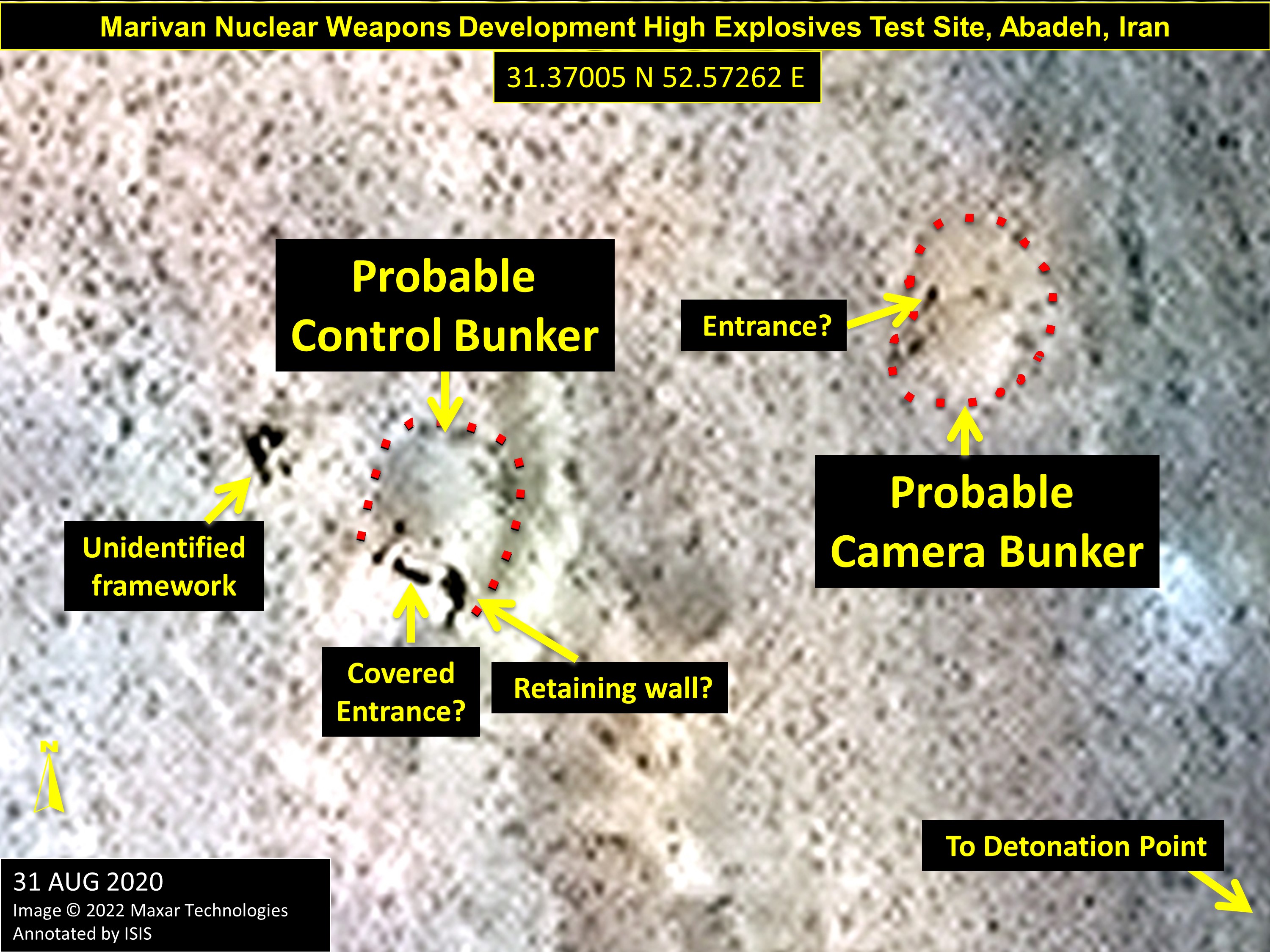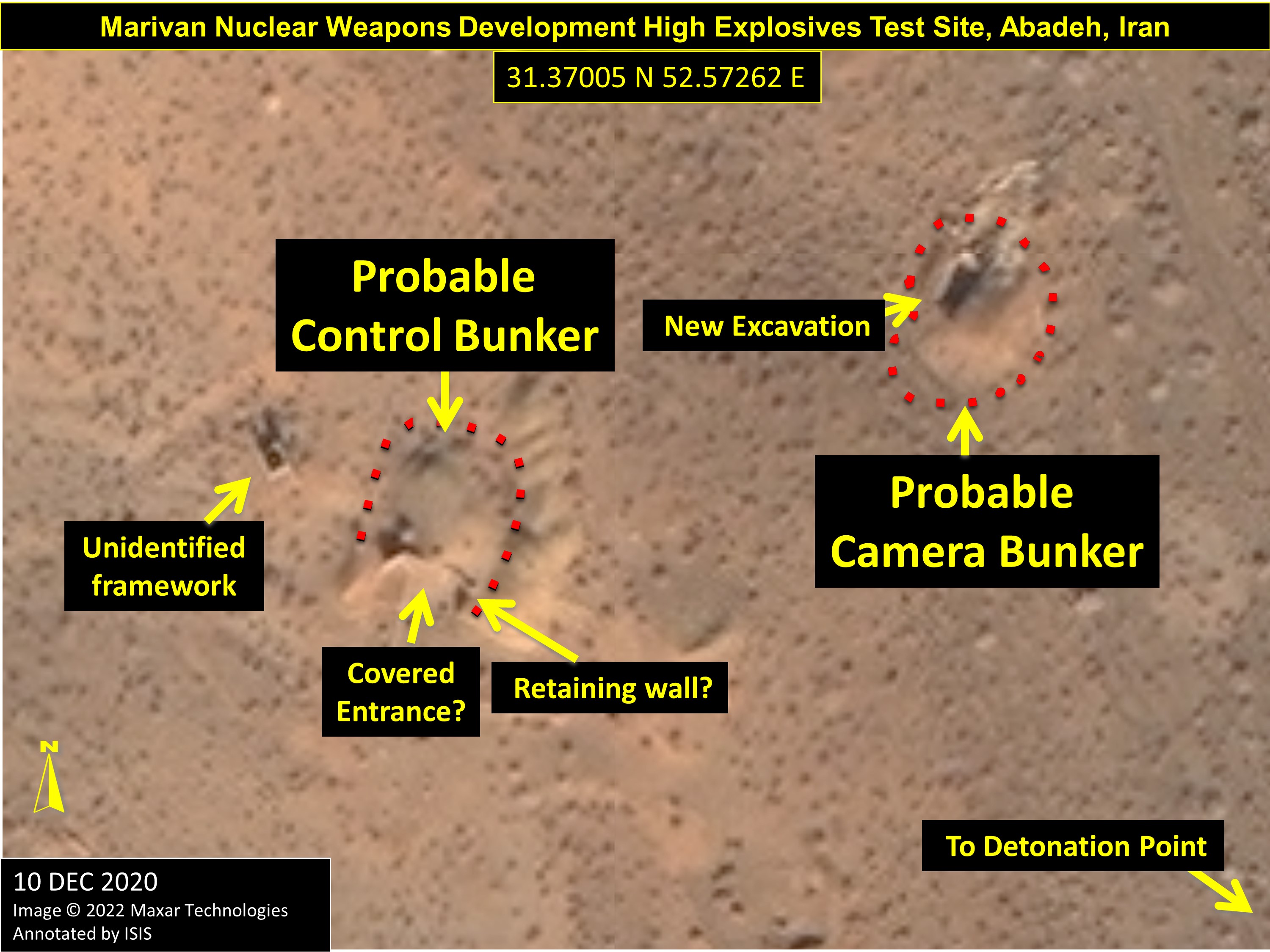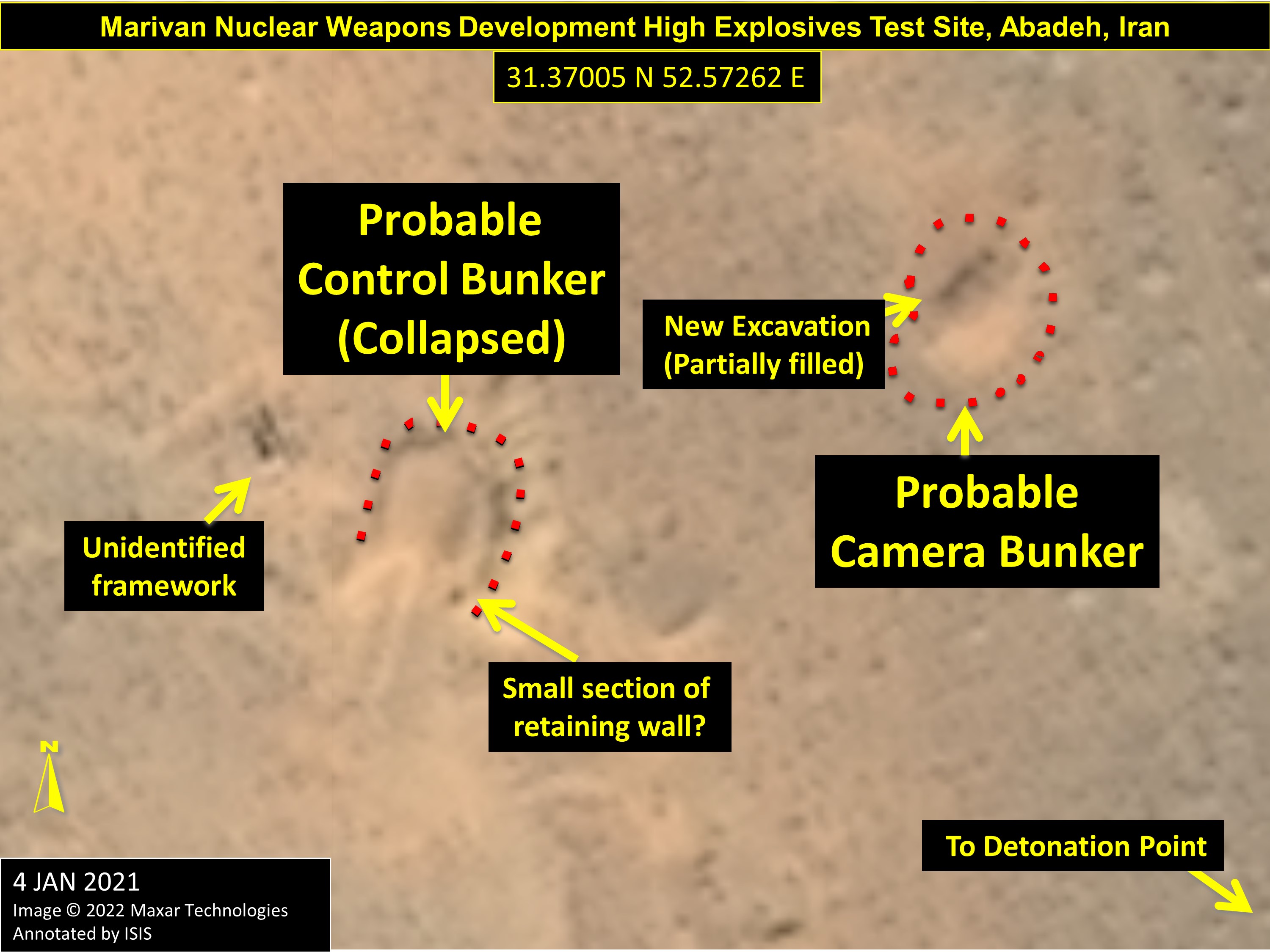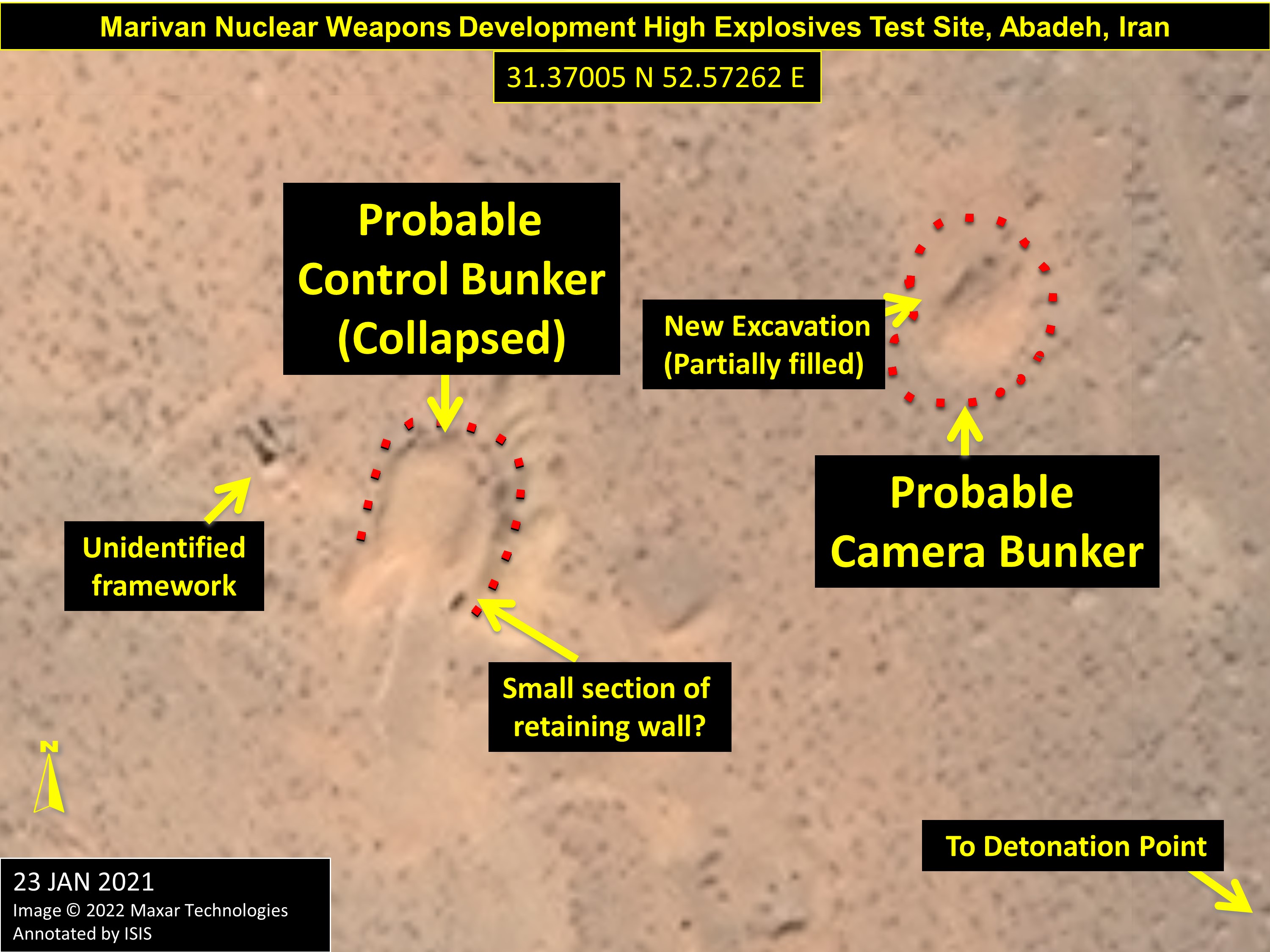Reports
More Demolition at the Marivan Former Nuclear Weapons Development Site
by David Albright and Sarah Burkhard *
March 1, 2022
New evidence has emerged of apparent Iranian demolition activity at the Marivan site near Abadeh, an important former Amad Plan test site engaged in conducting open air, larger-scale high explosive tests for developing nuclear weapons. The site included both a development/logistical support site and an outdoor test site, located about 1.5 kilometers northeast from the support site. Although the support site was razed in July 2019, the outdoor test site appears to have remained largely intact, until shortly after the International Atomic Energy Agency (IAEA) visited the Marivan site in the late summer of 2020. In the fall of 2020, commercial satellite imagery published by the Institute showed new excavation at one of two bunkers at the outdoor test site. New imagery analysis now shows that in December 2020, Iran appears to have deliberately collapsed the other bunker, likely aimed at preventing further scrutiny by IAEA inspectors or any other visitors, perhaps other officials, curious nomads, or other curious non-officials. In the following quarterly safeguards report, the IAEA announced its detection of uranium particles at the site, adding it to a long list of sites linked to Iran’s undeclared nuclear material and activities.1
The findings at Marivan are examples of Iran’s pattern of destroying locations that undermines the IAEA’s responsibility to verify the completeness of Iran’s declarations of nuclear material and activities, a requirement derived from Iran’s comprehensive safeguards agreement and not dependent on the existence of an Additional Protocol.2 Despite this obligation, Iran has not only destroyed facilities but blocked all IAEA efforts to obtain explanations for undeclared uranium and past activities. The IAEA now needs support to expeditiously resolve the issue of Iran’s incomplete nuclear declaration. To do otherwise is to seriously harm the credibility of the IAEA and the validity and the survivability of any nuclear deal. In particular, it is critical to avoid repeating the types of mistakes made in 2015 during the implementation of the Joint Comprehensive Plan of Action (JCPOA), mistakes that stalled and almost derailed the IAEA’s unfinished investigation of Iran’s incomplete nuclear declaration, while enabling Iran and its allies to falsely claim the issue was “closed.” At the same time, U.S. negotiators should put Iran on notice that its refusal to expeditiously provide an honest, complete declaration is sufficient cause for the imposition of additional sanctions and their snapback in their entirety in the event of a nuclear deal.
Timeline of Recent Activities at Marivan
Figure 1 shows the outdoor test site in relation to the logistical support site in October 2013, before the support site was razed in July 2019. More than a year after the demolition of the support site, the IAEA gained access to the Marivan site and conducted a visit in late August of early September 2020. At the time of the visit, the outdoor test site still appeared largely intact. Figure 2 shows a close up of two bunkers at the test site—one probable control bunker, and one probable camera bunker—in August 2020. Satellite imagery dated after the IAEA visit show that around October 2020, new excavation occurred at the probable camera bunker (see Figure 3).3 New analysis of satellite images taken in December 2020 and January 2021 shows that the excavation appears to have been partially refilled. At the same time, the probable control bunker appears to have been fully collapsed (see Figures 4 and 5). The symmetry of the roof collapse further indicates a deliberate effort, caused for example by the destruction of internal support posts. The covered entrance and the adjoining support walls are also no longer clearly visible.
Figure 1. The Marivan site included an outdoor high explosive test site about 1.5 kilometers away from its logistical support site.
Figure 2. A close-up of the outdoor high explosives test site in August 2020 shows the two probable bunkers.
Figure 3. New excavation at the probable camera bunker, first visible in October 2020, is still visible in this December 10, 2020, image. The probable control bunker appears intact.
Figure 4. About two weeks later, the probable control bunker has been collapsed.
Figure 5. This January 23, 2021, image provides another view of the collapsed bunker.
*Frank Pabian contributed importantly to the analysis.
1. Laura Rockwood, “IAEA Safeguards: Correctness and Completeness of States’ Safeguards Declarations,” in International Atomic Energy Agency (eds),Nuclear Law (The Hague: T.M.C. Asser Press, 2022), ↩
2. Laura Rockwood, “IAEA Safeguards: Correctness and Completeness of States’ Safeguards Declarations,” in International Atomic Energy Agency (eds), Nuclear Law (The Hague: T.M.C. Asser Press, 2022), https://doi.org/10.1007/978-94-6265-495-2_10 ↩
3. David Albright, Sarah Burkhard, and Frank Pabian, “Abadeh is Marivan (Revised and Updated): A Key Iranian Former Secret Nuclear Weapons Development Test Site,” Institute for Science and International Security, November 18, 2020, https://isis-online.org/isis-reports/detail/abadeh-is-marivan-irans-former-secret-nuclear-weapons-development-test-site/8. ↩






 twitter
twitter